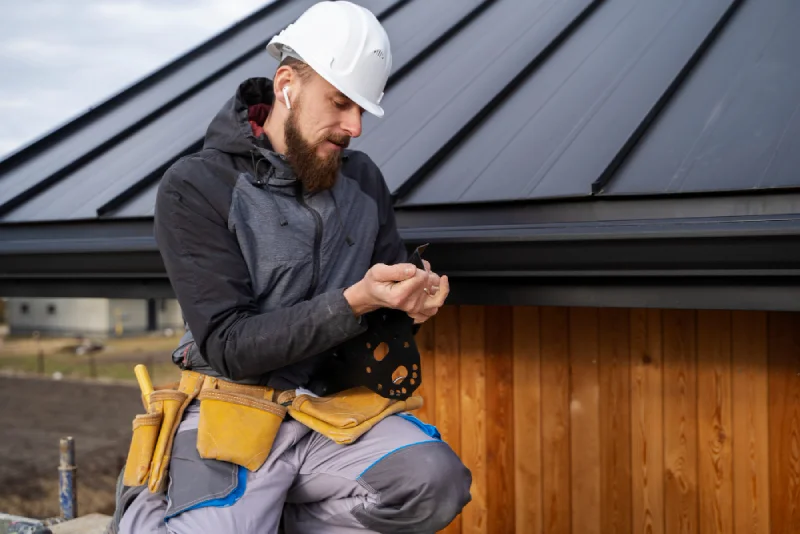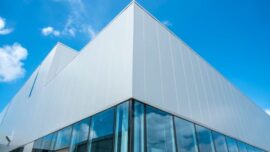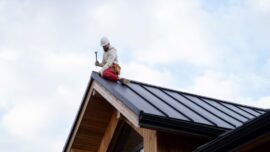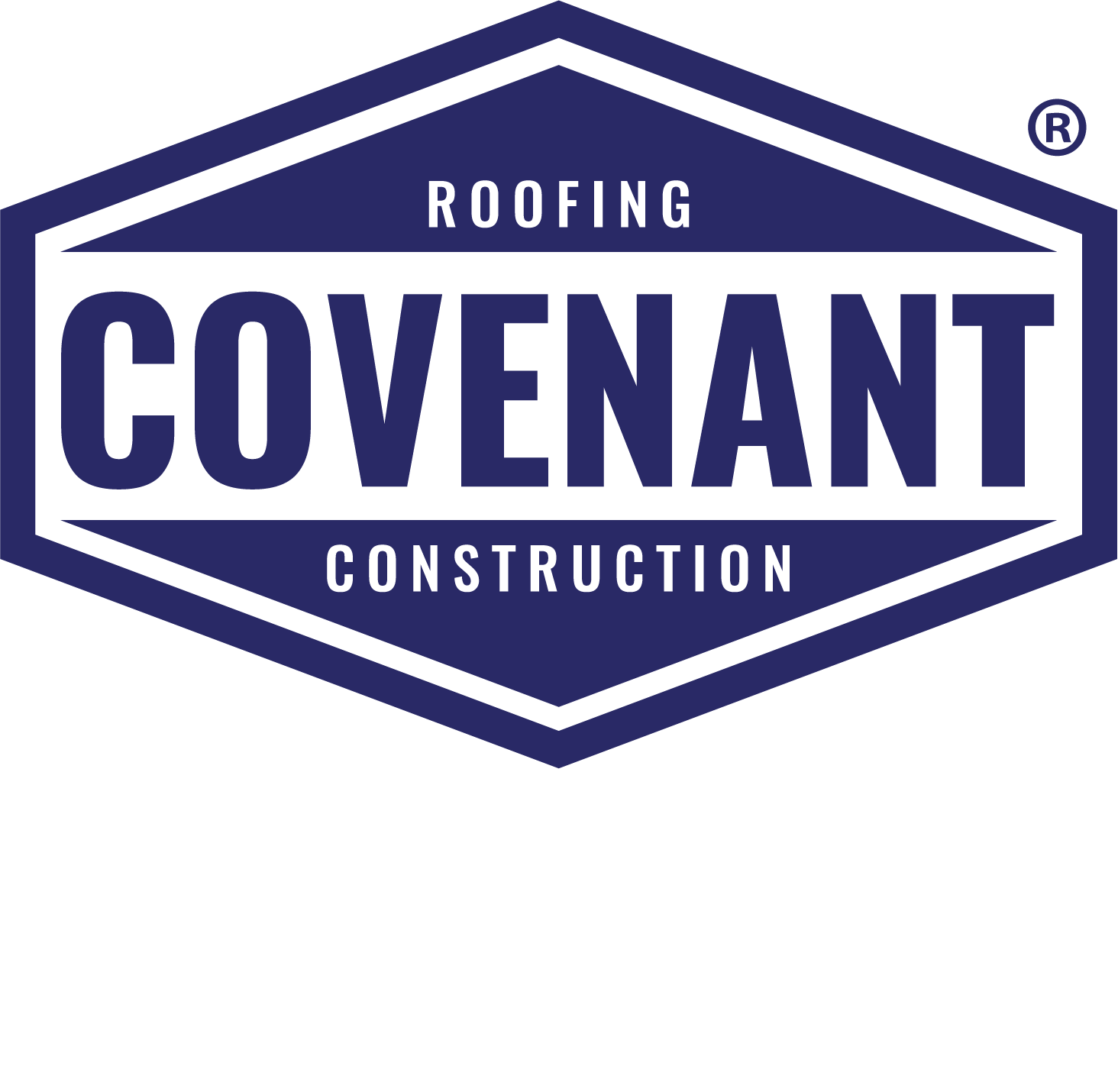
Comprehensive Guide to Roof Membranes for Flat or Low-Slope Roofs
It’s a common misconception that all roofs are made from the same materials, yet this couldn’t be further from the truth. In order to protect diverse roof types as best as possible, there are actually many distinct types of roofing membranes.
In this guide, expect valuable insights through the different types of flat roof membranes as we demystify their benefits, materials, and installation techniques. Get ready to be inspired as we empower you with the knowledge to make the best roofing choices for your property.
Understanding Membrane Roofing
A membrane roof is a specialized system designed for flat or low-slope structures, offering superb waterproofing and protection. The key reason you’d opt for a membrane roof is its ability to create a watertight barrier, preventing leaks and moisture infiltration. These roofs are perfect for commercial and industrial buildings, providing exceptional durability and longevity.
The minimum slope required for a membrane roof is typically around 1/4 inch per foot, ensuring proper drainage to prevent water buildup. Whether it’s EPDM, TPO, or PVC, membrane roofs offer versatile options to meet your specific needs, keeping your property dry and secure for years to come.
Built-Up Roof Membranes (BUR)
Built-Up Roof (BUR) membranes, a time-tested roofing solution, consist of multiple layers that create a durable and weather-resistant shield for your structure. BUR membranes are commonly used in commercial and industrial settings, particularly on flat or low-slope roofs. They are ideal for warehouses, factories, and buildings where durability and longevity are paramount. Here’s a quick overview of BUR’s advantages and disadvantages:
Advantages:
- Longevity —- BUR membranes can last for decades when properly installed and maintained.
- Weather Resistance —- They are highly effective in protecting against extreme weather conditions, including UV rays and heavy rain.
- Fire Resistance -— BUR membranes are inherently fire-resistant due to their composition.
- Sound Insulation —- These roofs provide effective sound insulation, reducing noise from outside.
Disadvantages:
- Weight — BUR systems are heavy, requiring robust building support.
- Installation Complexity — They demand skilled labor for installation, making them relatively expensive.
- Maintenance — Over time, BUR roofs may require periodic maintenance and resealing.
- Environmental Impact — Traditional BUR systems use hot asphalt, which can have environmental concerns.
Modified Bituminous Membrane Roofing
Modified bitumen is a versatile and durable roofing solution that has gained popularity for its superior performance in various applications. It is a mix of asphalt and rubber or plastic polymers, which enhances its flexibility and weather resistance. Two common types of modified bitumen membranes are SBS (Styrene-Butadiene-Styrene) and APP (Atactic Polypropylene).
Key Features and Benefits of Modified Bitumen:
- Durability — Modified bitumen roofs are known for their long service life, often exceeding 20 years.
- Weather Resistance — They can withstand extreme weather conditions, including heavy rain, hail, and UV exposure.
- Flexibility — These membranes expand and contract with temperature fluctuations, reducing the risk of cracks and leaks.
- Easy Maintenance — Modified bitumen roofs are low-maintenance and can be easily repaired if damage does occur.
SBS Roof Membrane Modified Bitumen
SBS membranes incorporate rubber polymers for added flexibility and strength. They are known for their excellent elongation properties, making them highly resistant to cracking and tearing. SBS membranes are suitable for various temperatures and weather conditions, making them a versatile choice.
APP Roof Membrane Modified Bitumen
APP membranes use a plastic polymer for added durability and UV resistance. They are heat-welded during installation, creating a seamless and watertight barrier. APP membranes are excellent for regions with extreme heat and sunlight exposure.
Single-Ply Roof Membrane: Thermoplastic and Thermoset
Single-ply membranes are a popular choice for commercial and industrial roofing. They come in various types, each with unique benefits. EPDM roofs, made from synthetic rubber, offer durability and weather resistance. TPO roofs are energy-efficient and provide excellent UV protection. PVC roofs are known for their chemical resistance. KEE roofs are highly durable and can withstand extreme conditions.
The roofing membrane choice depends on your specific needs, budget, and location. Consider the benefits and comparative analysis to make an informed decision for your roofing project. Understanding these single-ply membrane options is key to making the right roofing decision for your needs.
EPDM Roofs (Ethylene Propylene Diene Monomer)
EPDM roofs are known for their durability, resistance to UV rays, and ease of installation. They are cost-effective and require minimal maintenance. When compared to TPO and PVC, EPDM may offer slightly less energy efficiency but excels in longevity and weather resistance.
TPO Roofs (Thermoplastic Olefin)
TPO roofs are energy-efficient, reflecting sunlight and reducing cooling costs. They are also environmentally friendly and resistant to tears and punctures. While TPO roofs are energy-efficient, they may not be as durable as EPDM or PVC.
PVC Roofs (Polyvinyl Chloride)
PVC roofs are known for their chemical resistance and strong UV protection. They offer excellent fire resistance and low maintenance. PVC roofs provide robust chemical resistance but can be more expensive than EPDM or TPO.
KEE Roofs (Ketone Ethylene Ester)
KEE roofs are extremely durable and can withstand harsh conditions and UV exposure. They offer exceptional longevity and low maintenance requirements. KEE roofs are highly durable, outperforming many other single-ply options in extreme environments.
Spray Polyurethane Foam (SPF) Roof Systems
Spray Polyurethane Foam (SPF) roofing is a versatile and innovative roofing system. It’s created by spraying a mixture of polyurethane foam and protective coatings directly onto the roof, providing a seamless and highly efficient barrier. SPF roofing finds extensive use in commercial and industrial buildings where insulation, energy efficiency, and waterproofing are critical.
Here are the key aspects of SPF roofing:
Advantages:
- Seamless Insulation — SPF offers a seamless, energy-efficient insulation layer, reducing heat transfer and energy consumption.
- Waterproofing — It forms a watertight seal, preventing leaks and water damage.
- Lightweight — SPF is lightweight, reducing stress on the building’s structure.
- Versatility — It can be applied to various roof shapes and substrates.
Limitations:
- Initial Cost — SPF roofing can have a higher upfront cost.
- UV Sensitivity — It’s vulnerable to UV exposure and requires protective coatings.
- Professional Installation — Proper application requires skilled contractors.
- Maintenance — Regular inspections and maintenance are essential.

Fluid-Applied Liquid Membrane Roofing
Liquid membrane roofing is a flexible and efficient solution for sealing and waterproofing various surfaces, from roofs to decks and foundations. Liquid membrane roofing provides versatile, seamless protection, making it a valuable option for homeowners and commercial property owners across various applications.
It’s ideal for protecting outdoor surfaces, preventing water intrusion, and extending the lifespan of these areas. Liquid membrane is commonly used to seal and waterproof basement walls and foundations, guarding against moisture infiltration. It is a popular choice for flat and low-slope roofs in both residential and commercial settings.
Seamless Protection
Liquid membrane creates a continuous, watertight barrier, reducing the risk of leaks and water damage.
Easy Application
It can be applied with brushes, rollers, or sprayers, making it adaptable to various surfaces and complex designs.
Longevity
Liquid membranes are highly durable and can withstand extreme weather conditions, offering extended protection.
For home use, products like Flex Seal and Henry’s Tropi-Cool offer convenient solutions. For commercial purposes, GacoRoof and Karnak 81 are reputable choices known for their long-lasting protection.
Cost Considerations
When planning a membrane roofing project, understanding the factors affecting costs is essential. Different membrane materials like EPDM, TPO, PVC, or modified bitumen vary in cost. EPDM and TPO are often more budget-friendly, while PVC and KEE-modified bitumen can be pricier due to their superior durability. Here are key considerations that impact the expenses:
Roof Size and Complexity
The larger and more intricate your roof is, the more labor and materials will be required, increasing the overall cost.
Installation Complexity
Factors like roof slope, substrate condition, and the need for insulation or additional layers can affect labor costs.
Location and Climate
Roofing costs can vary by region, with extreme climates often requiring more robust materials, insulation, or special considerations.
Understanding these cost factors and comparing membrane types can help you make an informed decision for your roofing project, ensuring it meets your budget and performance needs.
Flat Roof Membrane FAQs
What is a flat roof membrane?
A flat roof membrane is a waterproofing and protective layer used on flat or low-slope roofs to prevent water infiltration. It serves as a barrier against moisture and helps extend the roof’s lifespan.
Do you need a membrane on a flat roof?
Yes, a membrane is essential for flat roofs. Without a proper membrane, flat roofs are vulnerable to water damage, leaks, and premature deterioration. The membrane ensures the roof remains watertight and resilient against the elements.
What are the different types of roof membranes for flat roofs?
Common types of roof membranes for flat roofs include EPDM (rubber), TPO (thermoplastic), PVC (polyvinyl chloride), and modified bitumen. Each type offers unique benefits in terms of durability, cost, and energy efficiency.
What is the membrane on a roof?
The membrane on a roof is a waterproof layer that forms a protective barrier against rain, snow, and other environmental elements. It is a crucial component of the roofing system, preventing water infiltration and ensuring the roof’s longevity.
What is the best membrane for roofing?
The best membrane for roofing depends on various factors, including climate, budget, and specific roofing requirements. EPDM is known for its durability, while TPO and PVC offer energy efficiency. The choice should be based on your project’s needs and a roofing professional’s advice.
Conclusion
Making the right choice is essential for your roof’s longevity and performance. From EPDM to TPO, PVC, and more, options abound. We understand this decision’s importance and want to discuss your specific needs and ensure the ideal roofing solution for your project. Your roof’s protection starts with the right choice! Contact us now.





